9.1 Sound
What is sound?

Sound is a wave caused by fast vibration.
Vibration becomes sound when the ear is able to detect it and relay the vibratory information to the brain.
Slow vibration can be visually seen as movement. As it gets faster it causes waves to pass through the air that our ear can detect as sound. The faster the vibration, the higher the sound.
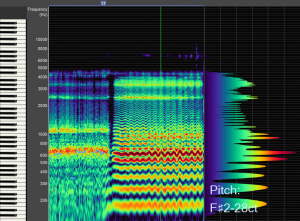
What are high frequencies?

Sounds of high tone. High pitched sounds, consisting of short waves.
Frequencies are a measure of pitch. High frequencies are sounds of high tone, as opposed to low tone. For example, the sound of a high pitched voice, or a high pitched instrument. High frequency sounds are made of short waves, whereas low frequency sounds are made of long waves.
The faster the vibration the higher the frequency of the waves, so high sounds are called high frequency sounds. Low sounds are called low frequency sounds. Thus, frequency is determined by the speed of the vibrations. Frequencies are measured in Hertz (Hz), which means cycles per second. A sound at 20,000 Hz is vibrating at 20,000 cycles per second.
The high frequencies are the sounds which stimulate brain energy.
Because they are short waves, high frequencies need to be heard at close range for their full impact to reach the ear. Low frequency waves can be hundreds of metres long, whereas high frequencies may be less than a millimetre.
The measure of frequencies is Hertz, which means cycles per second. The ear has the capacity to hear sounds in the range from 20Hz to 20,000Hz.
Where are they found?

High frequencies are found in most nature sounds and in classical music.
High frequencies are found in natural sounds such as bird songs, running water, wind, frogs or insects. There is also a large component of high frequencies in classical music.
Unfortunately, we get very little exposure to high frequency sounds in today’s world as machine noise is so prevalent and most machines emit low frequencies.
The chart below shows the relationship between frequencies (pitch) and decibels (loudness)
The banana shape that you can see on this chart is referred to as the “Speech Banana.”
The Speech Banana is a term used to describe the area where all the sounds of human speech, appear on an audiogram. When the speech sounds (known as phonemes) are plotted out on the audiogram they form the shape of a banana. For this reason, audiologists and other speech professionals refer to that area as the speech banana.
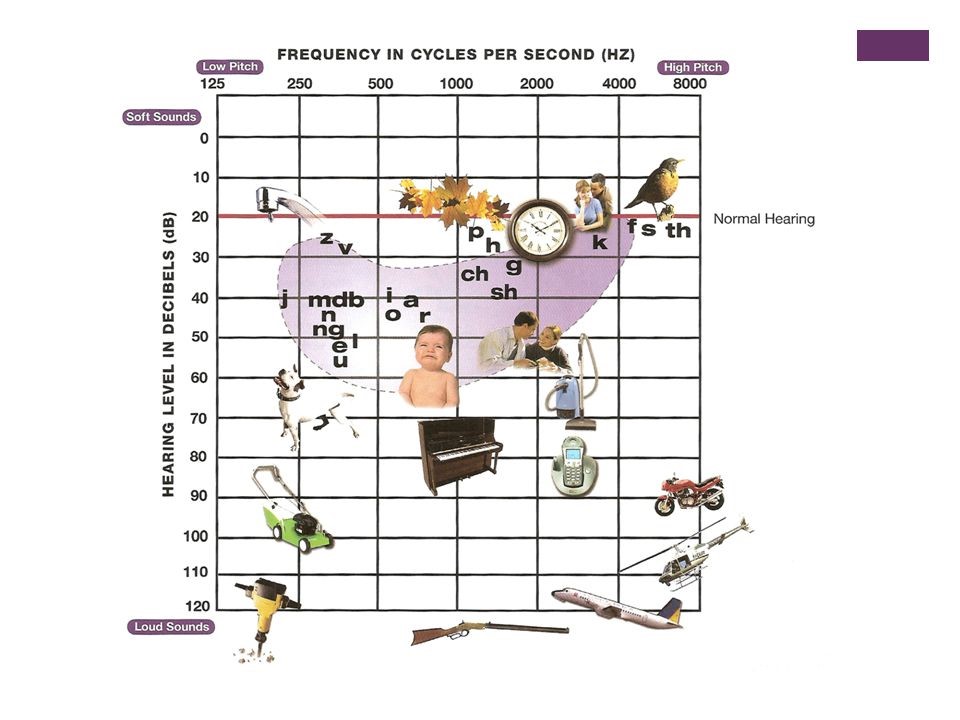
What is the difference between frequencies and decibels?

Frequencies measure pitch, while decibels measure volume (loudness.)
Frequencies and Decibels are the two ways of measuring sound. Decibels measure the volume, ie how loud the sound is. This is also referred to as the intensity of sound. Frequencies measure the pitch, ie how high or low the sound is.
High decibel (high volume) sounds are diagrammed as a taller wave.
High frequency sounds are diagrammed as a more frequent wave (waves closer together).
Decibels are measured on a logarithmic scale because there is such a vaste difference between the quietest sound and the loudest sound. The capacity of the human ear is to hear a sound as quiet as 0 Db or to survive a sound as loud as 120 Db. The difference between these sounds is one trillion times the intensity. However, our perception of sound is modified so that it only seems to us to be about 4,000 times louder.
| This table compares the increase in sound intensity to the level of loudness we perceive | ||
| Decibel Value | Increase in Sound Intensity | Perceived Increase in Volume |
| 0 dB | ||
| 10 dB | 10 times the sound intensity | 2 times as loud |
| 20 dB | 100 (10 x 10) | 4 (2 x 2) |
| 30 dB | 1,000 (10 x 10 x 10) etc. | 8 (2 x 2 x 2) |
| 40 dB | 10,000 | 16 |
| 50 dB | 100,000 | 32 |
| 60 dB | 1,000,000 | 64 |
| 70 dB | 10,000,000 | 128 |
| 80 dB | 100,000,000 | 256 |
| 90 dB | 1,000,000,000 | 512 |
| 100 dB | 10,000,000,000 | 1024 |
| 110 dB | 100,000,000,000 | 2048 |
| 120 dB | 1,000,000,000,000 | 4096 |
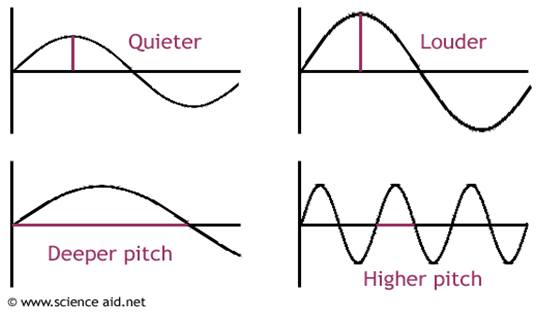
Being measured on a logarithmic scale means that the increase in decibels does not reflect the actual increase in sound intensity. Every time sound intensity doubles, this represents an increase of just 3dB.
However, a 10dB increase is required before we perceive a sound as being twice as loud.
This means that as sounds get louder, it is easy for us not to realise this, meaning that ear damage can occur very easily.
Most information on the dangers of sound focuses on decibels. Industrial regulations for instance require that workers should not be subjected to sounds of 85 decibels for more than 8 hours per day.

All loud sound is damaging, whether high or low frequency. We need more quiet, high frequency sound to retrain the ear.
In fact, all low frequency sounds can be damaging whether they are loud or quiet and the effect is cumulative.
There is little discussion about frequency and the impact of high or low frequency sounds on our system. All loud sounds are damaging, including high frequency ones. However, we seldom hear of some sounds being beneficial.
The type of sound that is beneficial, and that we need more of, is quiet, high frequency sound. These sounds are found in nature—bird songs, insects, running water — and in Sound Therapy
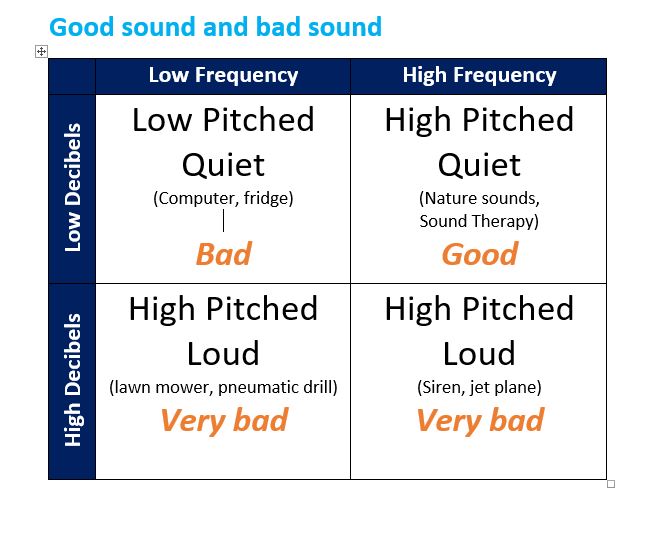
What are harmonics?
The basic tone of sound is the sine wave which is a flat sound with no modulation or sound colour. The sine wave does not occur on its own in nature but it can be generated electronically. It is a boring, tiring, unpleasant sound. There is no interest or complexity in it to stimulate the brain.
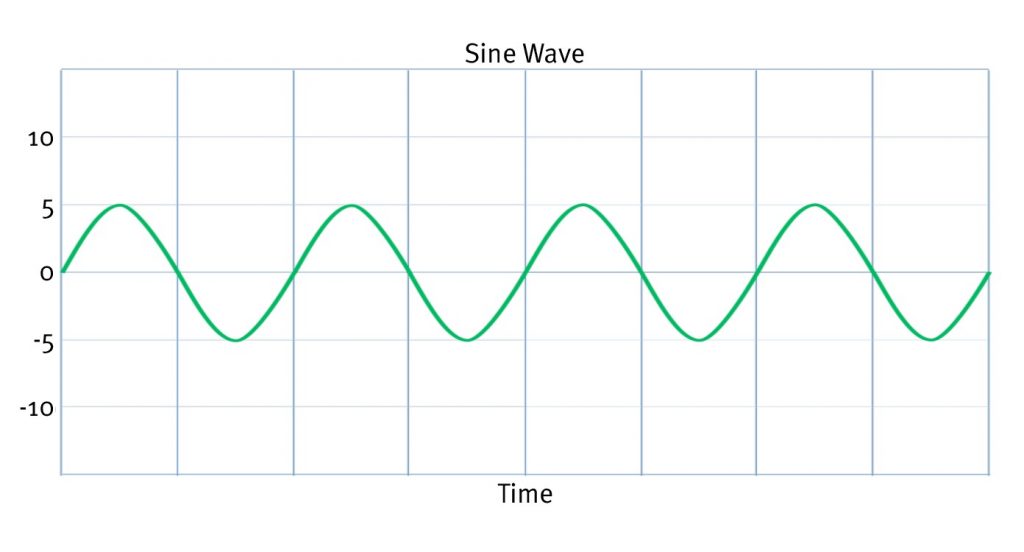
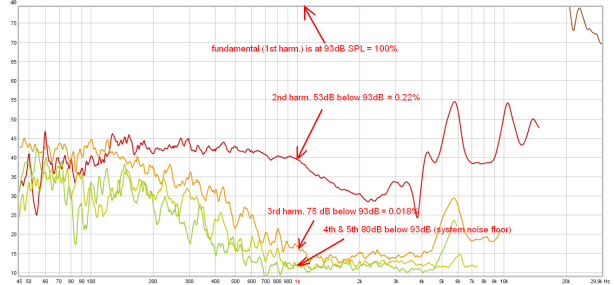
In natural sounds there are high harmonics which relate to the basic tone. Each of the harmonics is also a sine wave. When several sine waves play together in a harmonic structure we get a sound with a particular tone or character.
There are natural laws which determine the frequency of the harmonics relative to the basic
tone. The mathematics of these laws was discovered by Fourier. Harmonics always occur at set intervals from the basic tone i.e.
basic tone 1st harmonic 2nd harmonic 3rd harmonic
eg.100 Hz 200 Hz 300 Hz 400 Hz..
Formants
The harmonic structure is different for each sound. High points in the curve are called Formants. Each musical instrument has formants which always occur at the same frequencies. A flute, for instance has a formant at approximately 800 Hz. An oboe has formants at 1400 Hz and 3,000Hz. A good tenor singer has a formant at approximately 3,000 Hz. This is true no matter what note the instrument or voice is playing.


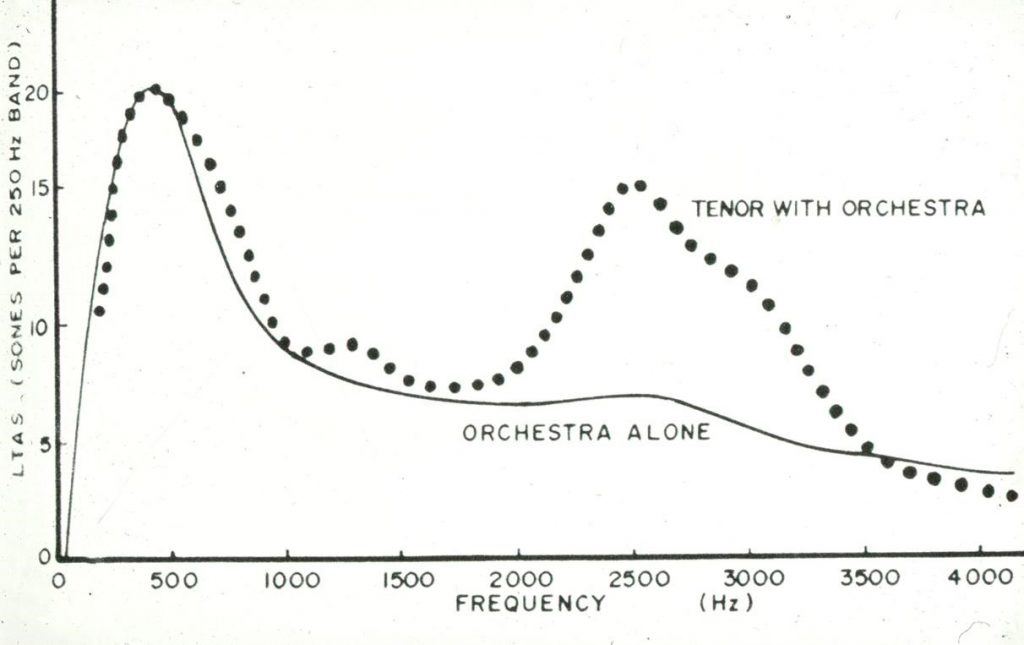
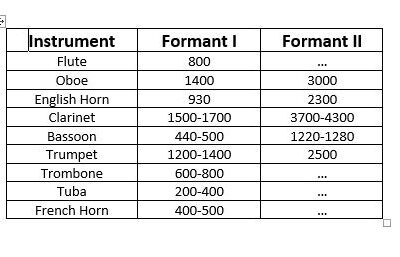
In speaking, each person’s voice has a different harmonic structure and this is why we can distinguish one voice from another.
The height of the curves, i.e. the loudness of the formants, increases relative to the dips when the loudness of the sound increases.
The formant laws were discovered by Schuman in 1925. A formant is an area in the harmonics with increased amplitude specific to the particular instrument.
1st Formant law
Each instrument is characterised by particular formants which always remain at the same frequency.
2nd Formant law
The formant increases in amplitude when the volume increases.
Meaning in Sound
Changing the harmonic structure of sounds changes the meaning they carry for the human being. We convey information by altering the harmonic structure. It is this structure which tells us the emotional mood of the speaker when we listen to the spoken word. We detect slight nuances which tell us if the person is excited, angry, nervous etc.
The voice changes each time the psychological state changes. The voice is an immediate reflection of the inner state. Tomatis showed the immediate link between voice and ear. We can only speak what we hear and vice versa. Since we accept that the voice can change its spectrum we must also accept that the ear can change its spectrum. Therefore the audiogram can change. Sensory stimulation develops the sensory organs and the sensory areas of the brain. If the stimulation is lacking in early life, the brain does not develop normally.
Life force is that which drives us to look for interesting sensory input. We are energised by interesting events. Aliveness is brought about by interest. The attentiveness of the human being is stimulated by high frequency sounds. In the spectrum of sound and meaning, it is the high frequencies which communicate to us: “this is interesting – listen to this!”
When the harmonic structure of sound is such that the high frequencies are emphasised, the non verbal message carried is “this is really vital, important, interesting information.” So the mind tunes in. The non verbal message is stronger than the verbal one. The non verbal one is carried by the harmonic structure and it goes into a deeper level of our consciousness.

